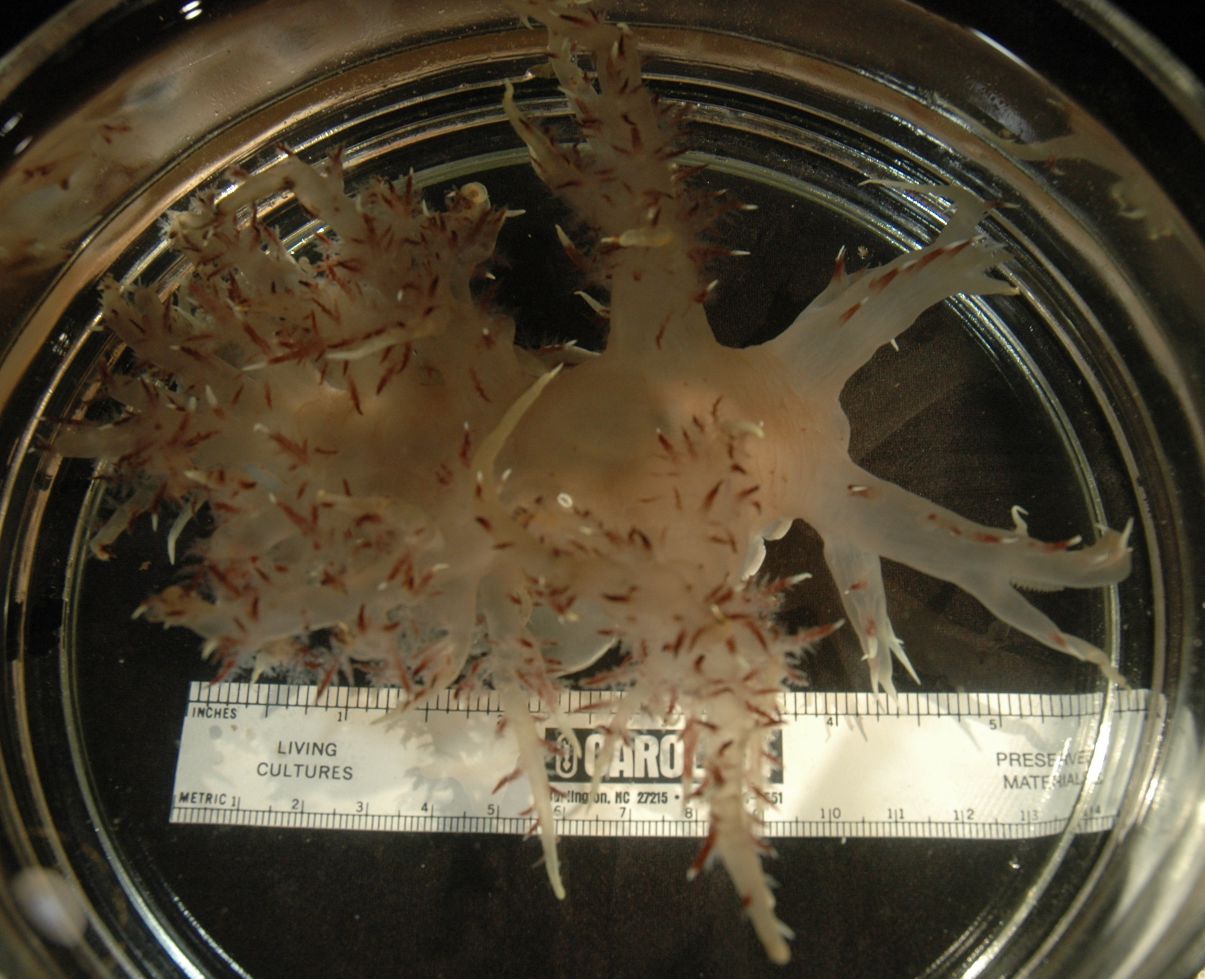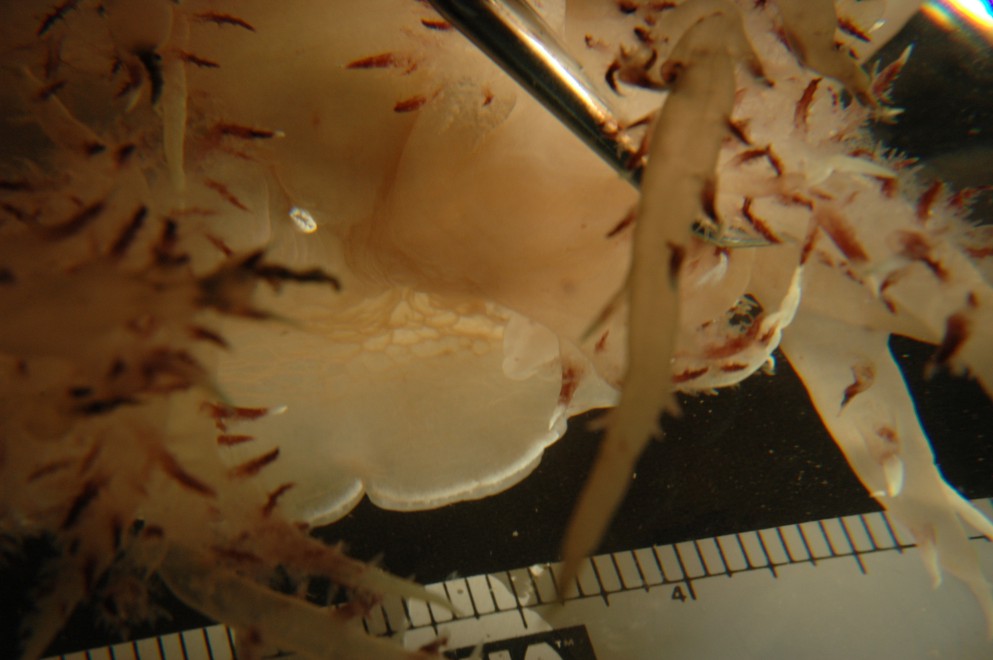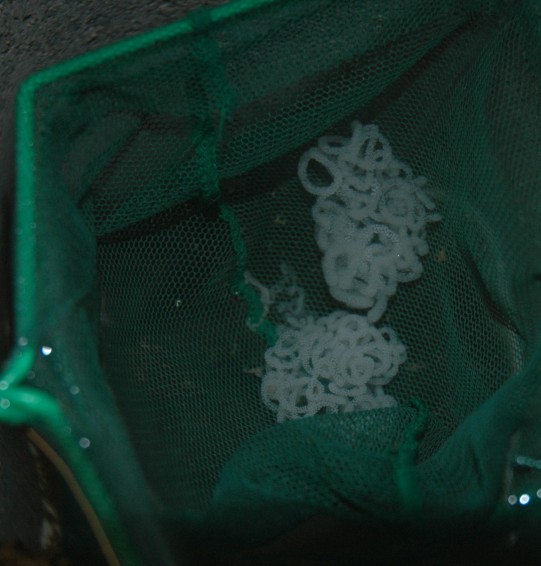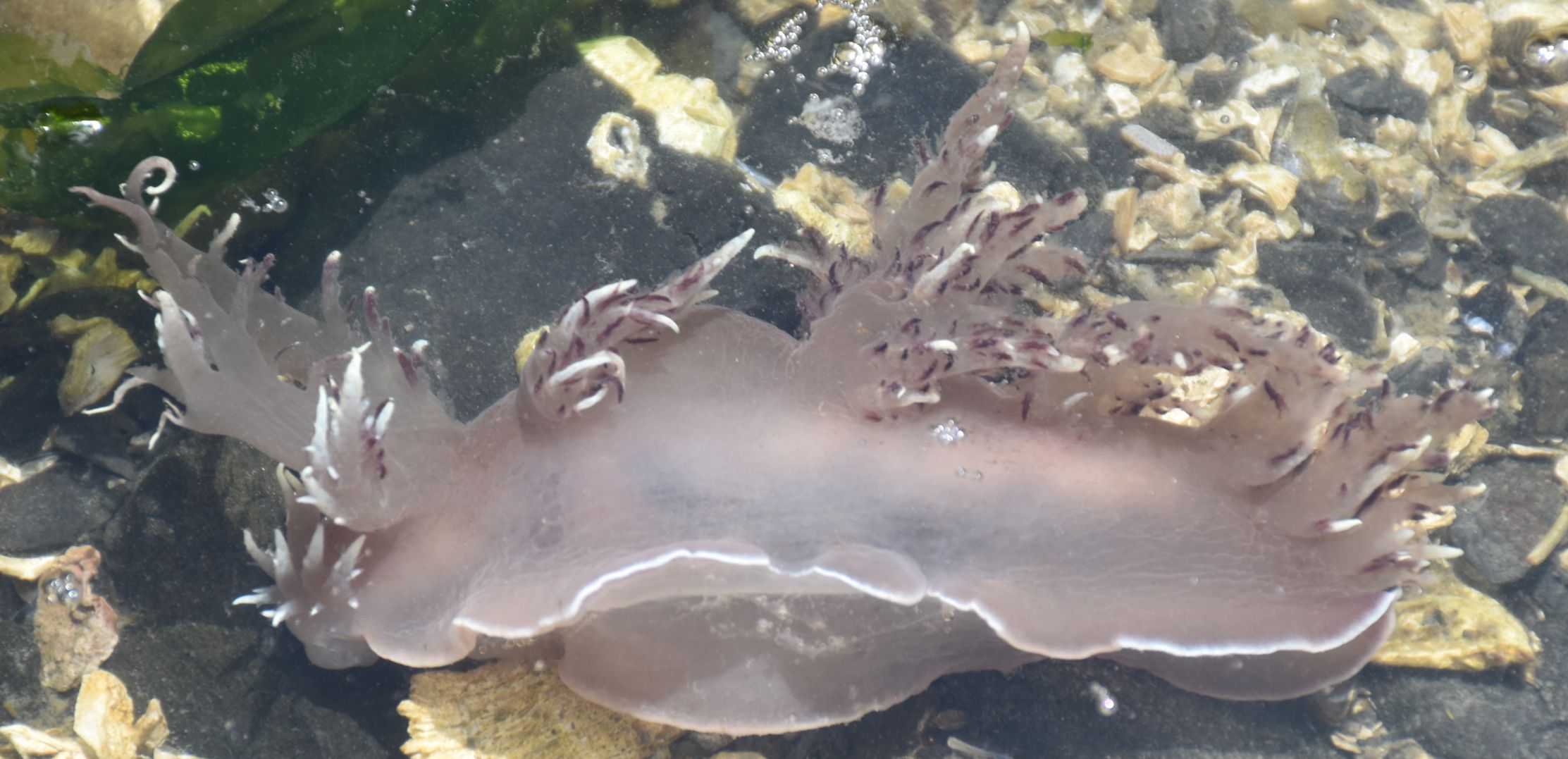Dendronotus iris (Cooper, 1863)Common name(s): Giant dendronotus |
|
| Synonyms: Dendronotus giganteus |  |
| Phylum Mollusca
Class Gastropoda Subclass Opisthobranchia Order Nudibranchia Suborder Dendronotacea Family Dendronotidae |
|
| Dendronotus iris captured at 15 m depth, Coffin Rocks | |
| (Photo by: Dave Cowles, August 2005) | |
How to Distinguish from Similar Species: D. albopunctatus has a large, wide oral veil and yellowish white spots. Other Dendronotus, such as D. diversicolor, have no row of bushy projections along the posterior border of the rhinophore stalk.
Geographical Range: Unalaska Island, Aleutian Islands to Los Coronados Island, Baja California.
Depth Range: Mostly subtidal, down to 200 m. Sometimes seen on the surface over deep water, or in eelgrass flats.
Habitat: Mostly benthic on soft bottoms.
Biology/Natural History: This species feeds on the tubedwelling anemone Pachycerianthus fimbriatus, and on Nemertean worms. Besides its radula, it has large jaws for clipping tentacles off the anemone, and leaves the anemone looking as if it has had a bad haircut. The nudibranchs are sometimes pulled into the tube when the anemone retracts, but do not seem to be harmed by this. Predators include Pycnopodia helianthoides. This nudibranch is very active (see movie) and can readily swim by gyrating the body. Eggs are laid in white strings (photo), often on the tubes of their prey. The heart of this individual was large, and the heartbeat was easily seen through the dorsal surface (see movie).
According to Baltzley
et al., (2011), many gastropods, including this species, have
a special
network of pedal ganglia
in their foot which assists in crawling. The two main neurons
involved
produce pedal peptides which elicit an increase in the rate of beating
of cilia on the foot, resulting in crawling.
| Return to: | |||
| Main Page | Alphabetic Index | Systematic Index | Glossary |
References:
Dichotomous Keys:Flora and Fairbanks, 1966 (as D. giganteus)
Kozloff 1987, 1996
Smith and Carlton, 1975
General References:
Behrens,
1991
Harbo,
1999
Johnson
and Snook, 1955 (as D. giganteus)
Wrobel
and Mills, 1998
Scientific
Articles:
Baltzley,
Michael J., Allison Serman, Shaun D. Cain, and Kenneth J. Lohmann, 2011.
Conservation of a Tritonia
pedal peptides network in gastropods. Invertebrate Biology
130: 4
pp. 313-324
Web sites:
General Notes and Observations: Locations, abundances, unusual behaviors:

The white-ringed gonopore
on the right side, and the anal papilla
(light colored, to the right of the gonopore
and benind and below the right rhinophore)
can be seen in this photo.
Photo by Dave Cowles, August 2005

The rhinophores
(left one shown here) have a series of projections on the posterior
side.
The clavus
is
perfoliate, retractable, and projects from an anterior shelf.
It
has a crownlike ring of projections around it.
Photo by Dave Cowles, August 2005

The eggs are laid in gelatinous white strands, which are often attached
to the tubes of their anemone prey.
This nudibranch is very active, rapidly swirling its cerata
around when it crawls or swims. Click here
for a movie of the animal waving its cerata.
The heart of this nudibranch is large and easily seen beating through
the dorsal surface. Click here
for a movie of the heartbeat.
This individual was seen in a high intertidal tide pool
at Urchin Rocks,
July 2020 (Dave Cowles). Several people reported seeing stranded
individuals
of this species in the Salish Sea at about that period. Strandings may
occur after reproductive aggregations.
Authors and Editors of Page:
Dave Cowles (2005): Created original page
